|
Our
Beautiful World
|
Day 07
|
The next morning arrived with sun from a blue sky: 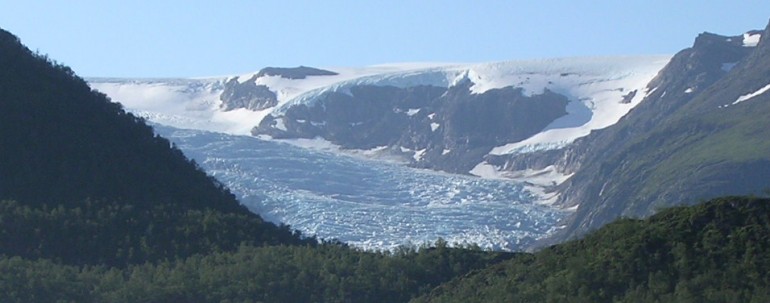 Really a nice looking view when the sun took over and lightened it all up against the blue sky. 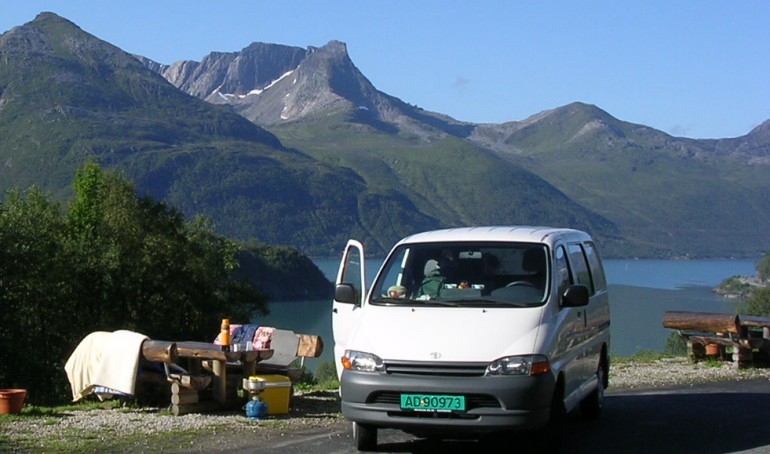 And so its time for breakfast, with a marvelous view to the mountains around. 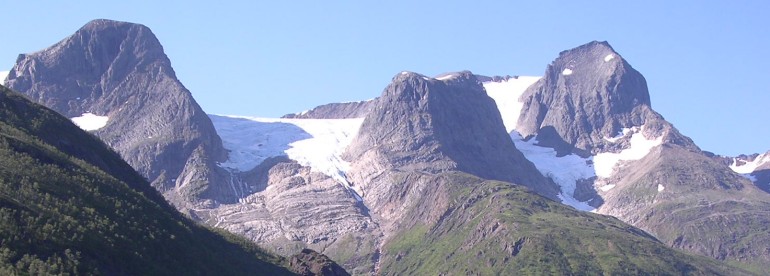 By the way, don't really understand why my wife kept saying: 'Don't you have enough pictures of mountains now?'..... This one and the next, are on the southern side of Glomfjorden, about half an hour and 3 tunnels further on. The tunnel right after Svartisen is 7.614 m long, and whenever we pass through any of those long mountain-tunnels we use to say 'See Norway from the inside'. 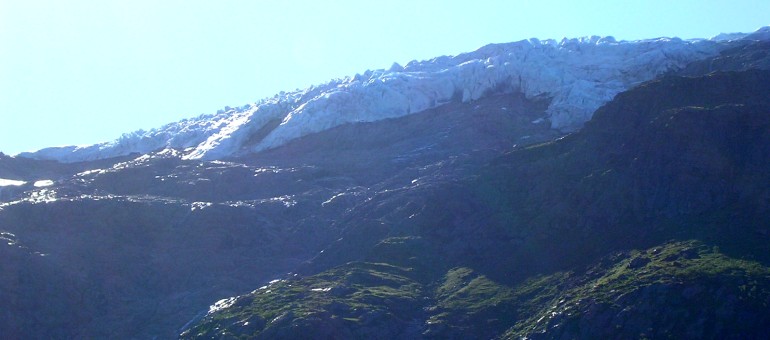 Anyway, here's another tongue from the glacier right across the road.  From here we also had a spectacular view of the southern side of Glomfjorden, with mountains peaking 1,260 m 1,.027 and 1,026 m asl. 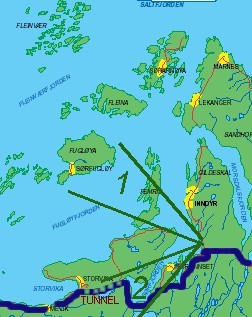 Next on our was the fantastic sandy beach at Storvika, just in time for a short dive - and a long, long walk along the shoreline, picking up shells and such things... A tunnel and a few kilometers more, we had a wonderful view of the Fugløya, Bird-Island, out to NorthWest of the road:  View of Fugløya (Bird Island) from the Mainland, No. 1 on the map above.  and a close-up and from the same place, a view South West from where we came, No. 2 on the map above:  With the mountain-tops up about 1.000 m asl 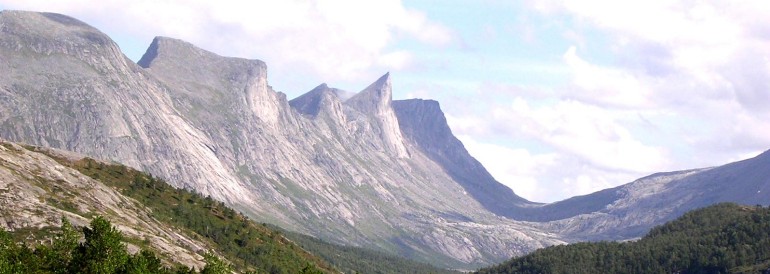 Just can't help taking those photos..... From the shore of Valnesvatnet towards Falkflaugtindane Link to another view of the mountains and the lake Valnesvatnet: click here. It's just too expensive to show it here..... and that brings us to another of the famouns tourist-attractions in Norway,: SALTSTRAUMEN 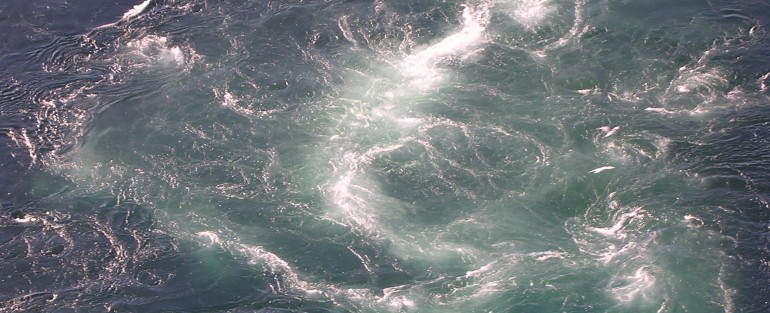 and if you don't know what that is, here is an explanation: Saltstraumen (The Salt-current) is the world largest tidal current. It's as easy as that. The maelstroem is created in a 3 kilometer long and 1509 m wide strait between Skjerstadfjorden and Saltenfjorden, about 32 km from the center of the city Bodø. 400 million cubicmeters of water pass through Saltstrømmen every 6 hours, balancing low and high tide between the two basins. 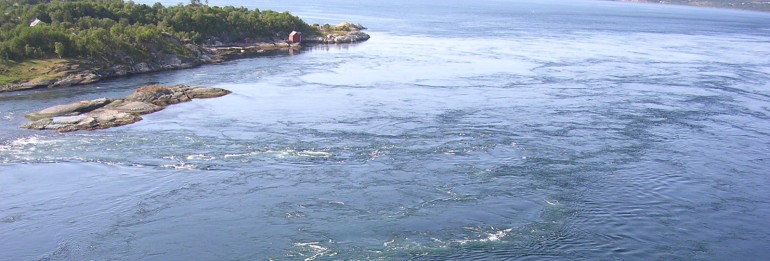 The maelstrom can reach speeds up to 20 knots. Nature's gigantic 'Jcuzzi' makes characteristic shirlpools up to 10 meters in diameter. The direction of the current changes every 6 hours or so. For a short interval, the strait lays quite still, before the current increases speed and the masses of water again cascade like a river. The regularity causes this to happen four times a day. 
The maelstrom brings food for large quantities of fish, and these brings seagulls and excited fishermen to gather. The current varies throughout the day, and also it is dependant on the moon's position, summer and winter, wind and air pressure. Therefore the impression of the maelstrom is not always as overwhelming as when it is strongest. More pictures from Saltstraumen here. and here.  © http://www.mamut.com/saltstraumenmuseum So across the bridge to our next stop: Bodø, on the other side of the fiord, out to the left behind the hills, on the picture above the bridge..  We told you in our introduction that we never waited more than an hour and a quarter for any ferry. That's not exactly the truth. From Bodø there are only 3 departures to Moskenes in Lofoten were we wanted to go. As we arrived after the last one that day, the next one was scheduled for 00.45 AM. So, at the parking lot in the harbour (havn) we had our evening-meal and a nice rest. Later we walked through the center of the town, looking at all the people gathering in the streets and the many restaurants which during summertime seemed to have moved outdoor.  So the only reason we came to Bodø, was to go onboard the ferry that was to take us to part two of this fantastic tour: LOFOTEN |
 ANIMALS over 250 |
 BIRDS over 500 |
 FLOWERS over 225 |



